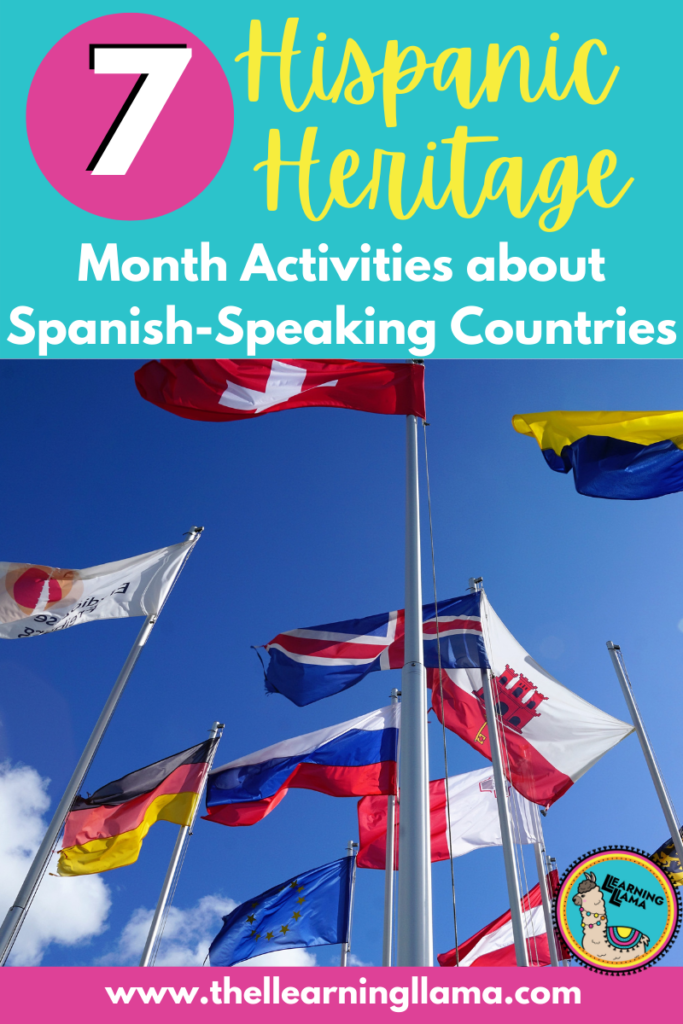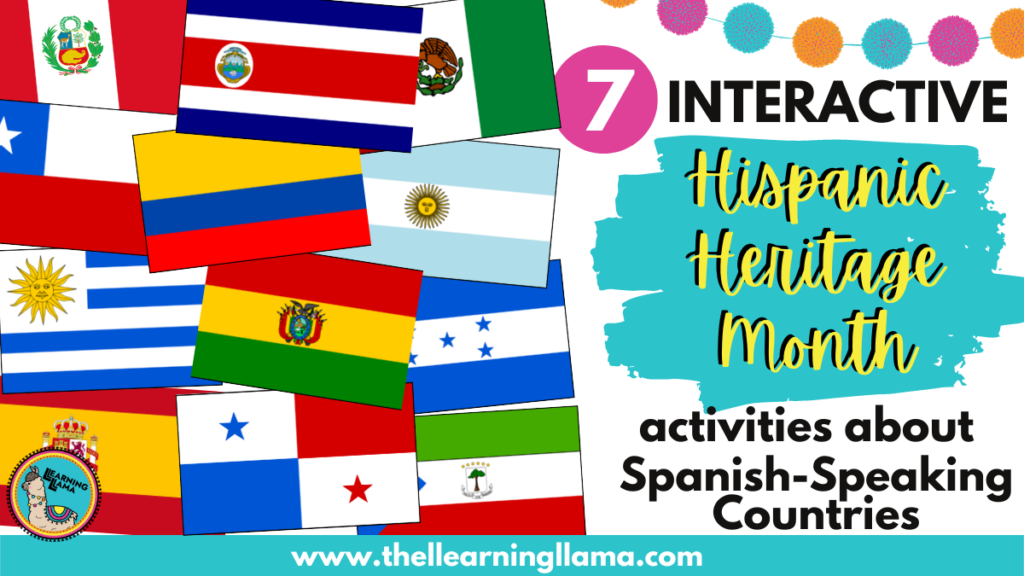Traveling is one of the best ways to experience a new culture. Immersing yourself in the language, daily life, customs, etc. can help us better understand another culture. But being in a classroom can make this challenging. How can we “travel” with our students? I have 7 interactive ideas for Hispanic Heritage Month Activities that will help us experience cultures in new, exciting ways.
This Hispanic Heritage Month, take some time to travel with your students. Now, this doesn’t mean book a field trip or fundraise for an exchange program. I mean take some time to “travel” with authentic resources, videos, and country activities. Immerse your students in the culture through virtual travel with these Hispanic Heritage Month activities.
Here are some of my favorite ways to get your students traveling and learning about Hispanic Heritage at the same time!
Virtual Field Trips
One of the best ways to get to know the culture of a country and its people is to visit in person. We all know that is far from possible to do with our students, so the second best option is a virtual field trip. Students can still experience the main locations through a virtual field trip by using Google Earth maps and taking a deep dive into the streets like a local! You could have students choose a country or city and complete a presentation of their findings or you could assign them a specific field trip that takes them to the best spots, provides authentic input, and culturally relevant information.
I have created many virtual field trips that guide students through the main attractions of various countries, like Spain, Mexico, Costa Rica, Guatemala, and more!
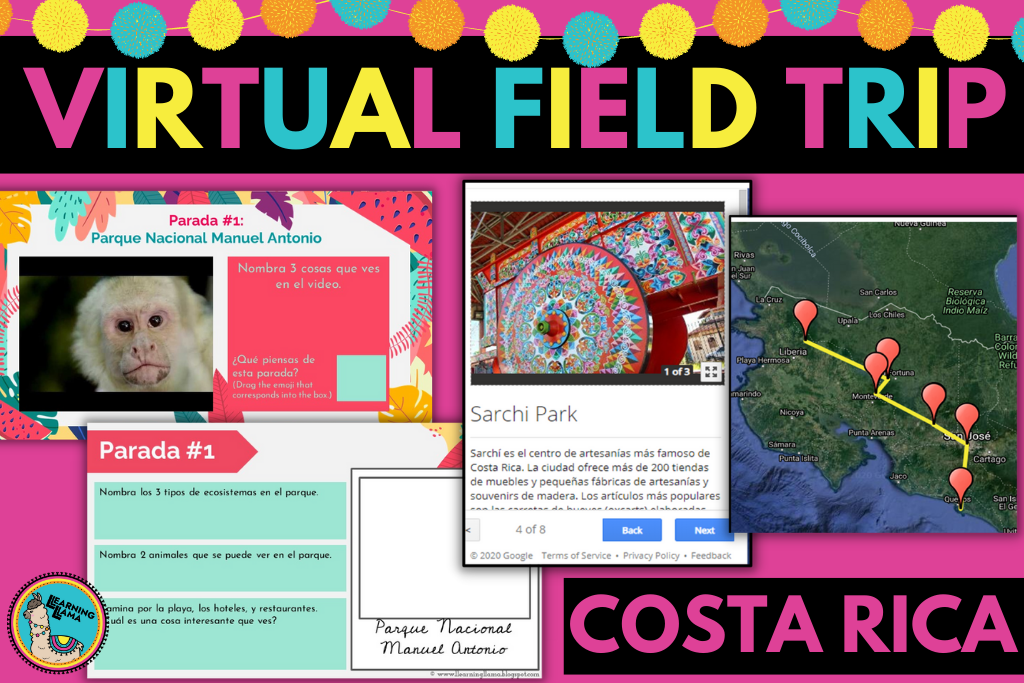
Share your Travel Experiences
Share videos and pictures of the location, especially if you’ve traveled there before. Now is your chance to share and relive your travel experiences! Students love seeing pictures and hearing stories of times that we traveled abroad! I have been to Peru, Guatemala, and Costa Rica. In 2017 and 2018 when I went to Guatemala with my church, I came back and prepared a short presentation with pictures and short stories of my experience!
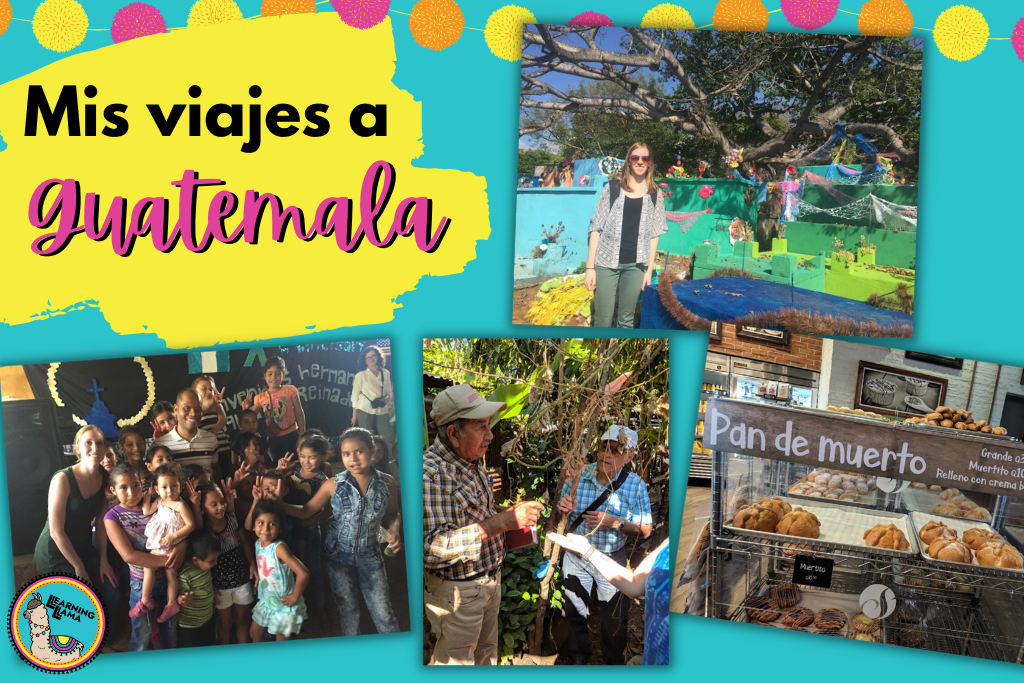
To spice up your Hispanic Heritage Month activities with some language input and content, try adding some readings or videos that explain the culture of the country in addition to your own images and stories. You’ve most likely been to the capital of the country where you studied abroad or traveled to (as that is where the airport is!) Here are South American capital readings with reading comprehension activities. You can use these to accompany your lessons, assign as sub plans, jigsaw readings, or stations.
One Fact a Day – Bell Ringers
I love a good routine! In my classroom, I always start class with a bellringer that is usually related to the day’s lesson. However, I really enjoy using bell ringers to tie in culture and holidays. Each day during Hispanic Heritage month, share one fact about a Spanish-speaking country with your students. They will read it (hopefully in the target language) and they can reflect on it, answer a comprehension question, or even keep a Hispanic Heritage month journal with fun facts they learn.
You can get an entire set of Facts About All 21 Spanish-Speaking Countries here – that is 210 FACTS! (10 for each of the countries). You’ll have one fact a day for an entire year! I have English & Spanish versions for any level of Spanish class. Your students will learn so many interesting details about different countries, like music, food, history, attractions, and more!
If you’re looking for a smaller bundle, here are Facts About South American countries – that is 90 FACTS! And Facts About Central American countries – 70 more facts!
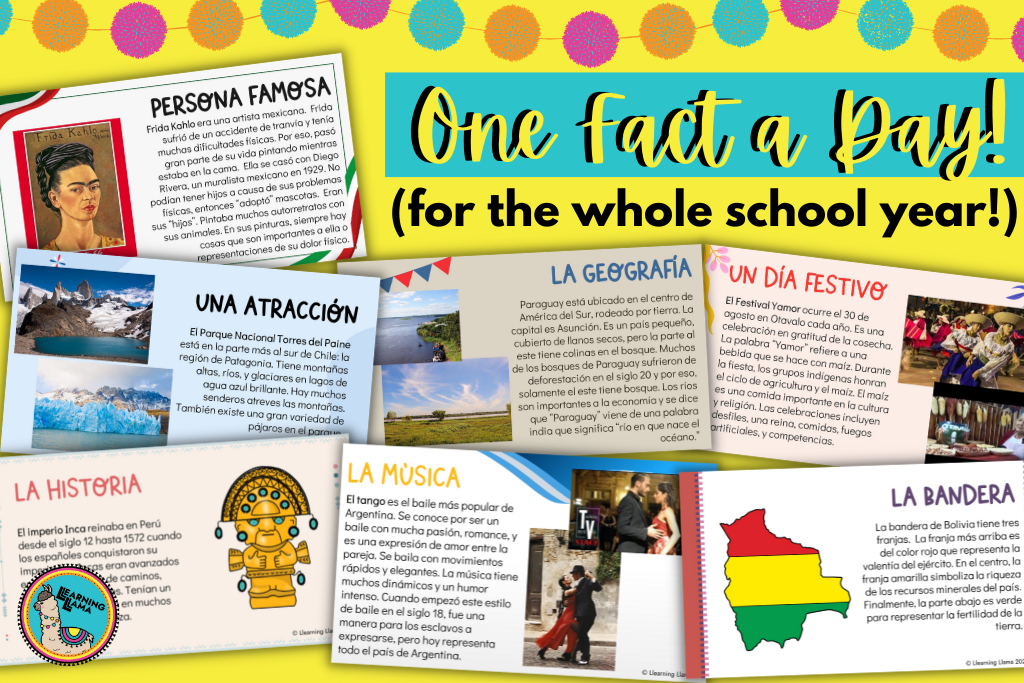
Scavenger Hunt
Students love going on scavenger hunts, and they make for the perfect Hispanic Heritage month activities! Utilize your entire classroom, hallway, or even school! Post scavenger hunt questions around the school about Hispanic Heritage month and different countries. Students will get up and move through the halls and will record their answers on a worksheet. Questions can be as basic or as advanced as you like. What is the capital of Uruguay? Where is Guinea Equatorial located? What can you see at Chichén Itzá? This is great for a fun Friday activity when students are extra antsy. The first group of students to complete the scavenger hunt, return to the classroom, and have the correct answers, wins!
WebQuest
Choose an attraction and create a webquest for students to travel virtually to this location. For example, a soccer stadium in Madrid or Machu Picchu in Peru. You can create a webquest where students must imagine they are traveling to this location and prepare for their trip. Where do they purchase tickets and how much does it cost? When is the best time of the year to go? What kind of clothing should they pack? What can they do when they are there? Your webquest form can be very basic so you can use it for any location. Better yet, let your students pick from a handful of options so they get to travel to an attraction of greater interest to them!
I made an entire webquest about La Tomatina for my students and had them read over all of the rules and regulations. Based on that, they had to create a shopping and packing list for what to bring. They realized things like a plastic bag to store their phone, closed-toe shoes, and sunscreen are a must when traveling to Buñol for La Tomatina! This practical activity let them do a real-life task in the target language while learning about a festival and Spain’s unique culture!
Learn more about using scavenger hunts and WebQuests in your classroom with this blog post.
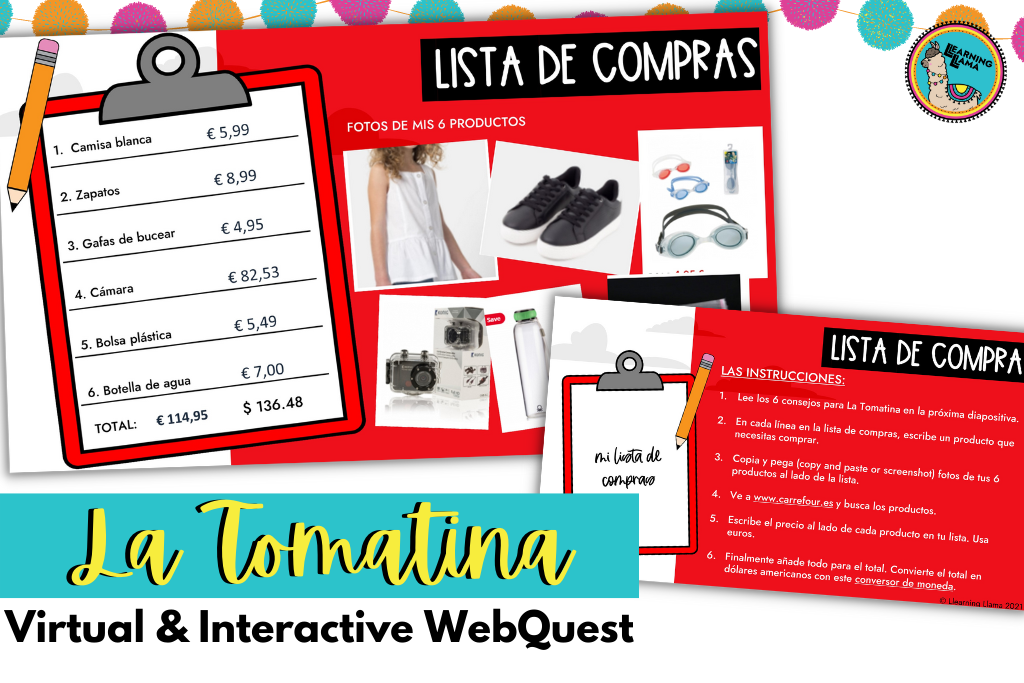
Around the Spanish-Speaking World
To cover as many Spanish-speaking countries as possible in this short month, assign pairs of students to one country. They will create a presentation about their country. Then, on presentation day, all groups will share their findings with the class. To make this as fun as possible, always add a required interactive element. This could be making a traditional dish, performing a dance, wearing an outfit, making an artifact, etc.
If you’re up for more, share your Around the World presentations with the school! Set up one day during lunch or one evening for students, faculty, or community members to come learn about Hispanic Heritage month. In this case, a poster board presentation is better than a PowerPoint so students can easily transport it to the gym or cafeteria where the displays can stay set up!
Create a Class Map
This might require you to enlist the help of some artistic or at least creative students. Have them trace or free-hand draw a map of Central and South America (or the world) on big bulletin board paper. They can outline all of the countries, but they do not need to label them. Assign a Spanish-speaking country to each student or group of students. They will then need to cut out a piece of paper in the right size and shape of their assigned country. They will add colors, symbols, and words that represent that country. When they have their country piece ready, they will tape or glue it to your class map. Once all countries are added, you’ll have a beautiful collage of unique Spanish-speaking countries! Tie this into any of the previous activities where students first get some background knowledge and time learning about the countries.
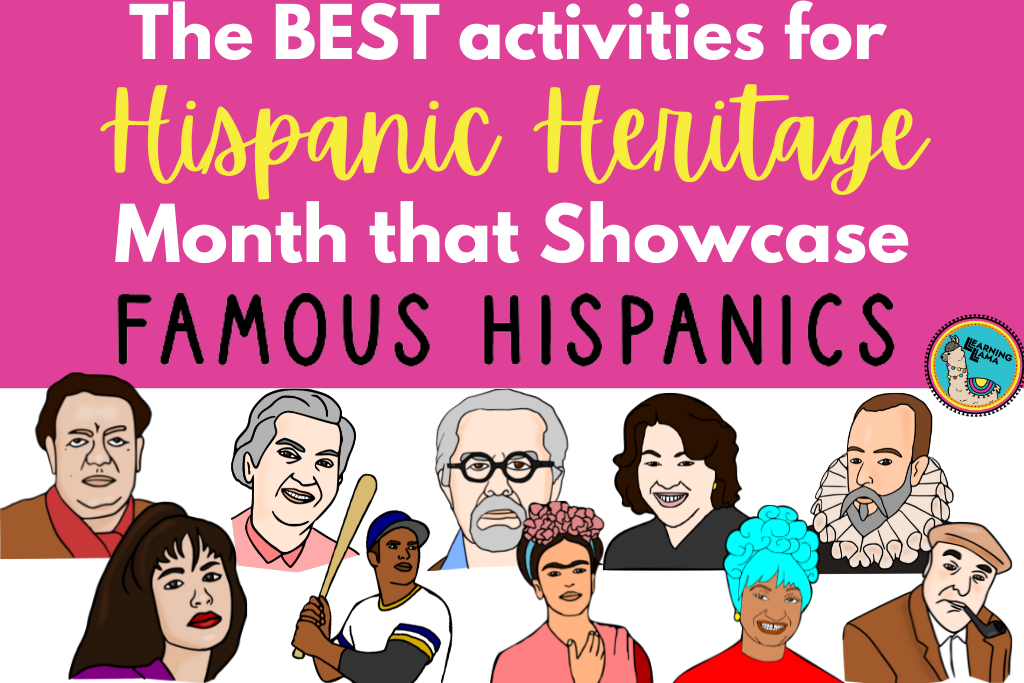
If you want to also incorporate famous Hispanics during Hispanic Heritage Month activities, check out this blog post with tons of ideas for teaching about important Hispanic figures, such as research posters, art galleries, Socratic Seminars, and more!
